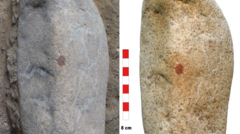Researchers have found that bedbugs diverged from bats to feed on human blood approximately 245,000 years ago. Their population skyrocketed around 13,000 years ago, coinciding with the rise of human settlements, reinforcing the long-standing relationship between the bloodsucking insects and humans.
The enduring and peculiar relationship between bedbugs and humans stretches back further than many have realized. A recent study published in the journal Biology Letters sheds light on how these bloodsucking pests transitioned from relying on cave-dwelling bats to becoming exclusive partners with human beings. This relationship, likened to a one-sided marriage, has facilitated the bedbug's survival, albeit at a bothersome cost to people who experience their bites.
In this study, scientists uncovered that bedbugs, predominantly the species Cimex lectularius, made the switch to human hosts approximately 245,000 years ago, when an early human or a Neanderthal inadvertently provided a blood meal. The shift enabled bedbugs to split into two separate species: one that continued to feed on bats and another, now notorious, that has thrived by suckling the blood of humans.
Warren Booth, an entomology professor and the study's lead author, noted that bedbugs are fundamentally reliant on human populations for their survival, stating, “You’re not going to find a bedbug in your garden.” This dependency became only more pronounced as human societies transitioned from a nomadic lifestyle to settled communities.
After an initial decline in the bedbug population aligned with early humans' mobility, researchers identified a significant population explosion around 13,000 years ago when humans began to establish permanent homes. This surge correlates strongly with the rise of agriculture and urbanization, creating ideal conditions for bedbugs to flourish.
The study not only chronicles the bedbug's ancient relationship with humans but also highlights the intricate dynamics of human civilization and the pests that travel alongside. As humans built cities and established themselves within permanent structures, bedbugs found an unintentional ally in the world of urban pests.
The enduring and peculiar relationship between bedbugs and humans stretches back further than many have realized. A recent study published in the journal Biology Letters sheds light on how these bloodsucking pests transitioned from relying on cave-dwelling bats to becoming exclusive partners with human beings. This relationship, likened to a one-sided marriage, has facilitated the bedbug's survival, albeit at a bothersome cost to people who experience their bites.
In this study, scientists uncovered that bedbugs, predominantly the species Cimex lectularius, made the switch to human hosts approximately 245,000 years ago, when an early human or a Neanderthal inadvertently provided a blood meal. The shift enabled bedbugs to split into two separate species: one that continued to feed on bats and another, now notorious, that has thrived by suckling the blood of humans.
Warren Booth, an entomology professor and the study's lead author, noted that bedbugs are fundamentally reliant on human populations for their survival, stating, “You’re not going to find a bedbug in your garden.” This dependency became only more pronounced as human societies transitioned from a nomadic lifestyle to settled communities.
After an initial decline in the bedbug population aligned with early humans' mobility, researchers identified a significant population explosion around 13,000 years ago when humans began to establish permanent homes. This surge correlates strongly with the rise of agriculture and urbanization, creating ideal conditions for bedbugs to flourish.
The study not only chronicles the bedbug's ancient relationship with humans but also highlights the intricate dynamics of human civilization and the pests that travel alongside. As humans built cities and established themselves within permanent structures, bedbugs found an unintentional ally in the world of urban pests.




















